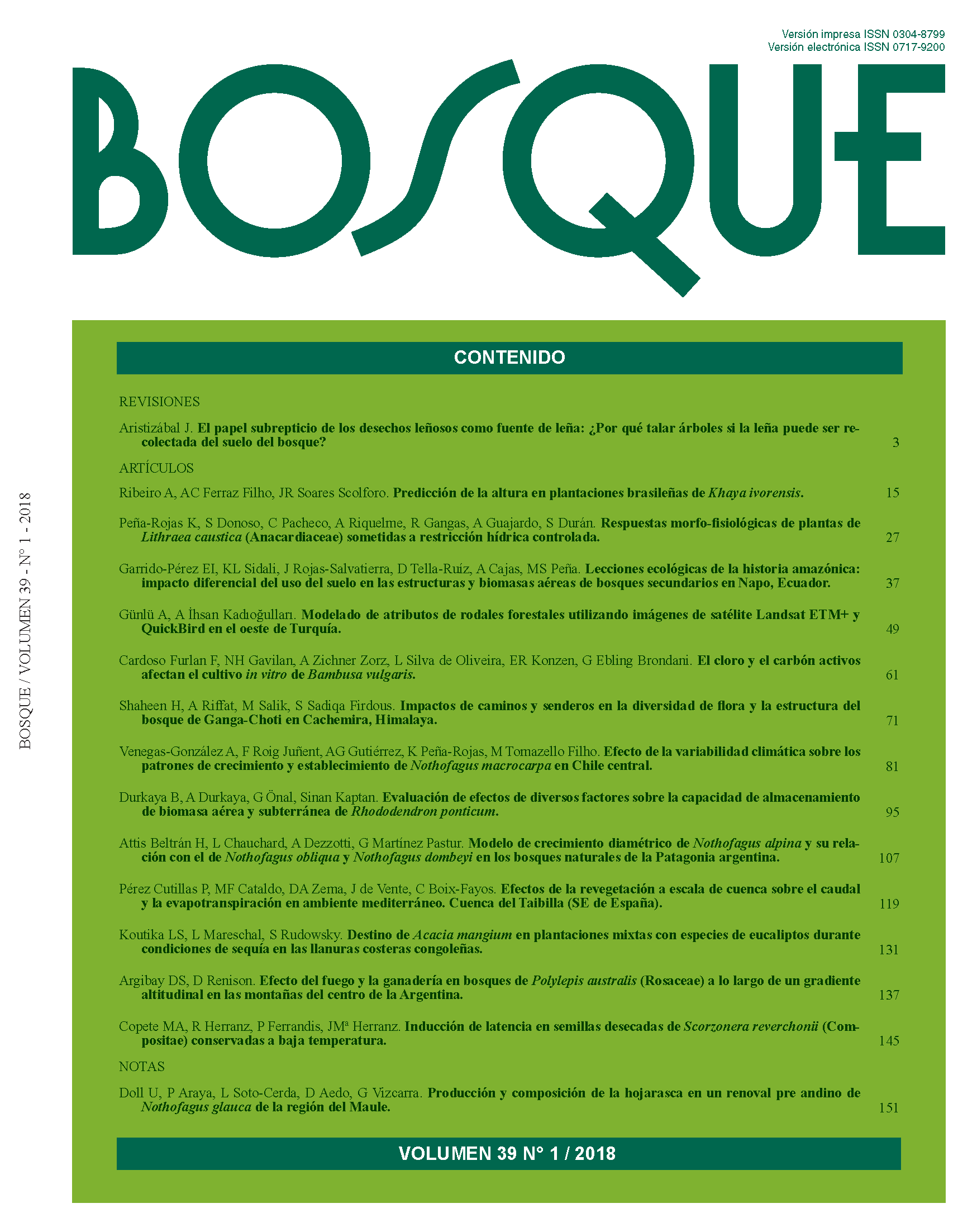Fate of Acacia mangium in eucalypt mixed-species plantations during drought conditions in the Congolese coastal plains
Main Article Content
Abstract
A mixed-species plantation of Acacia mangium (acacia) and Eucalyptus urophilla x grandis (eucalypt) hybrid was established on the Arenosols of the coastal Congolese plains to improve soil fertility and sustain forest plantation productivity. At one year into the second rotation, some of the acacia started to exhibit yellowing and drying of leaves, resulting in the death of the whole tree. One-third of the pure acacias (100A) and the mixed, 50 % acacia and 50 % eucalypt (50A50E) hybrid, exhibited these characteristics five months later. To limit the damage, the acacias were pruned up to 1.30 meters. The acacias were threatened by a dry season that extended two months longer than during the previous year, probably triggered by sandy textured soils and poor soil fertility (nitrogen < 0.07 % in the 0.05 meters). Soil moisture to a depth of 0.15 meters was higher under eucalypt compared to acacia. It appears that the acacia root structure may have been less tolerant to drought conditions compared with the eucalypts, leading to damage of acacias, which was exacerbated by the acacia’s young age, poor soil fertility and sandy soil texture. One year after pruning, acacias in both 100A and 50A50E presented a healthier tree structure. Furthermore, no negative impact on aboveground biomass -i.e., wood, bark, leaves and branch- has been recorded at 12 and 24 months.

